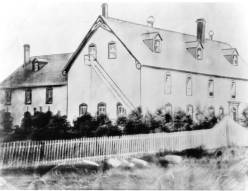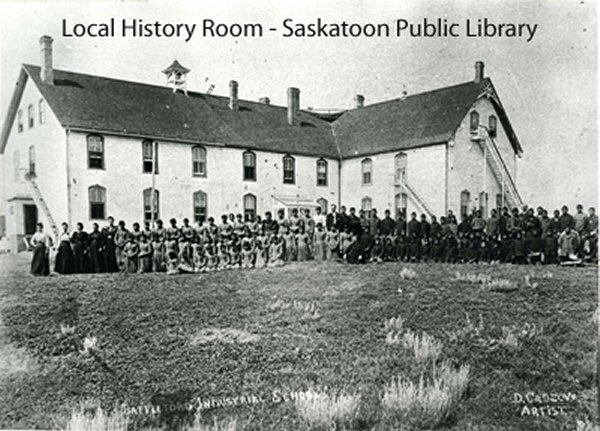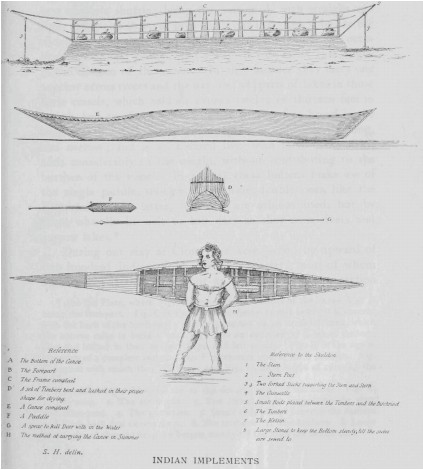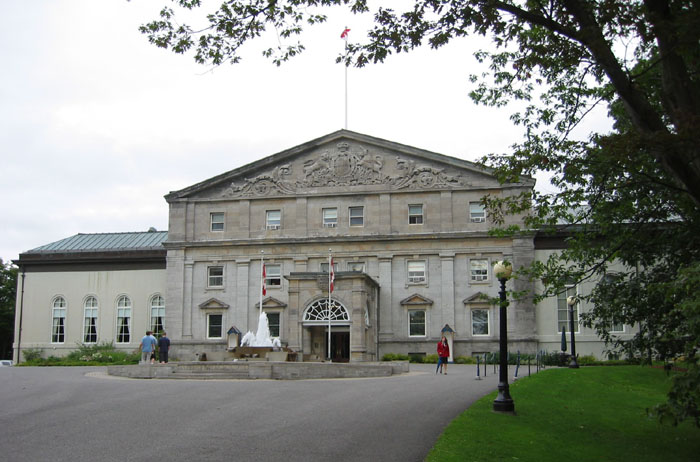|
Government House (Battleford)
Government House in Battleford, Saskatchewan served as the seat for the government of the Northwest Territories between 1878 and 1883 (the area that now makes up Saskatchewan was part of the Northwest Territories until the province was created in 1905). Originally a two-storey Carpenter Gothic wood structure designed by architect Thomas S. Scott, it was altered with Mansard roof A mansard or mansard roof (also called a French roof or curb roof) is a four-sided gambrel-style hip roof characterised by two slopes on each of its sides, with the lower slope, punctured by dormer windows, at a steeper angle than the upper. The ... that gave the building a third floor and expanded into a 3 floor complex. The building was constructed in 1877 but used for a short time for government administration centre. From 1883 to 1984 several institutions call the building their home: * Battleford Industrial School 1883 to 1914 * Seventh Day Adventist Academy from 1914 to 1931 * Oblates of St. ... [...More Info...] [...Related Items...] OR: [Wikipedia] [Google] [Baidu] |
Battleford, Saskatchewan
Battleford ( 2011 population 4,065) is a small town located across the North Saskatchewan River from the City of North Battleford, in Saskatchewan, Canada. Battleford and North Battleford are collectively referred to as "The Battlefords" by Saskatchewan residents, as well as on highway signage. Although there has been occasional talk of the two communities merging, as of 2012 they remain separate entities. The local economy is fuelled mainly by agriculture. Battleford is bordered by the Rural Municipality of Battle River No. 438, as well as by the city of North Battleford and a small section of the Rural Municipality of North Battleford No. 437. The 1973 western ''Alien Thunder'' was partially filmed in Battleford. History The Battleford area was the site of numerous independent and Hudson's Bay Company fur trading houses dating from the 1770s. William Holmes operated a post for the North West Company just above the confluence of the Battle and Saskatchewan rivers in 1784. ... [...More Info...] [...Related Items...] OR: [Wikipedia] [Google] [Baidu] |
Northwest Territories
The Northwest Territories (abbreviated ''NT'' or ''NWT''; french: Territoires du Nord-Ouest, formerly ''North-Western Territory'' and ''North-West Territories'' and namely shortened as ''Northwest Territory'') is a federal territory of Canada. At a land area of approximately and a 2016 census population of 41,790, it is the second-largest and the most populous of the three territories in Northern Canada. Its estimated population as of 2022 is 45,605. Yellowknife is the capital, most populous community, and only city in the territory; its population was 19,569 as of the 2016 census. It became the territorial capital in 1967, following recommendations by the Carrothers Commission. The Northwest Territories, a portion of the old North-Western Territory, entered the Canadian Confederation on July 15, 1870. Since then, the territory has been divided four times to create new provinces and territories or enlarge existing ones. Its current borders date from April 1, 1999, when the ... [...More Info...] [...Related Items...] OR: [Wikipedia] [Google] [Baidu] |
Carpenter Gothic
Carpenter Gothic, also sometimes called Carpenter's Gothic or Rural Gothic, is a North American architectural style-designation for an application of Gothic Revival architectural detailing and picturesque massing applied to wooden structures built by house-carpenters. The abundance of North American timber and the carpenter-built vernacular architectures based upon it made a picturesque improvisation upon Gothic a natural evolution. Carpenter Gothic improvises upon features that were carved in stone in authentic Gothic architecture, whether original or in more scholarly revival styles; however, in the absence of the restraining influence of genuine Gothic structures, the style was freed to improvise and emphasize charm and quaintness rather than fidelity to received models. The genre received its impetus from the publication by Alexander Jackson Davis of ''Rural Residences'' and from detailed plans and elevations in publications by Andrew Jackson Downing. History Carpenter ... [...More Info...] [...Related Items...] OR: [Wikipedia] [Google] [Baidu] |
Mansard Roof
A mansard or mansard roof (also called a French roof or curb roof) is a four-sided gambrel-style hip roof characterised by two slopes on each of its sides, with the lower slope, punctured by dormer windows, at a steeper angle than the upper. The steep roof with windows creates an additional floor of habitable space (a garret), and reduces the overall height of the roof for a given number of habitable storeys. The upper slope of the roof may not be visible from street level when viewed from close proximity to the building. The earliest known example of a mansard roof is credited to Pierre Lescot on part of the Louvre built around 1550. This roof design was popularised in the early 17th century by François Mansart (1598–1666), an accomplished architect of the French Baroque period. It became especially fashionable during the Second French Empire (1852–1870) of Napoléon III. ''Mansard'' in Europe (France, Germany and elsewhere) also means the attic or garret space itself, not ... [...More Info...] [...Related Items...] OR: [Wikipedia] [Google] [Baidu] |
Battleford Industrial School
The Battleford Industrial School was a Canadian Indian residential school for First Nations children in Battleford, Northwest Territories (now Saskatchewan) from 1883-1914. It was the first residential school operated by the Government of Canada with the aim of assimilating Indigenous people into the society of the settlers. The school was one of three industrial schools opened by the Government of Canada in the early 1880s. The senior officials of the Department of Indian Affairs arranged for various religious denominations to administer and operate the schools. The federal government delegated responsibility for the Battleford school to an Anglican minister. History The Battleford Industrial School opened December 1, 1883. Thomas Clarke served as the first principal. The school opened at Old Government House. Built in 1876, the building had been the seat of the Territorial Capital of the North-West Territories from 1878 to 1883, at which time the capital was relocated to ... [...More Info...] [...Related Items...] OR: [Wikipedia] [Google] [Baidu] |
Old Government House Battleford
Old or OLD may refer to: Places *Old, Baranya, Hungary *Old, Northamptonshire, England * Old Street station, a railway and tube station in London (station code OLD) *OLD, IATA code for Old Town Municipal Airport and Seaplane Base, Old Town, Maine, United States People *Old (surname) Music * OLD (band), a grindcore/industrial metal group * ''Old'' (Danny Brown album), a 2013 album by Danny Brown * ''Old'' (Starflyer 59 album), a 2003 album by Starflyer 59 * "Old" (song), a 1995 song by Machine Head *''Old LP'', a 2019 album by That Dog Other uses * ''Old'' (film), a 2021 American thriller film *''Oxford Latin Dictionary'' *Online dating *Over-Locknut Distance (or Dimension), a measurement of a bicycle wheel and frame *Old age See also *List of people known as the Old * * *Olde, a list of people with the surname *Olds (other) Olds may refer to: People * The olds, a jocular and irreverent online nickname for older adults * Bert Olds (1891–1953), Australian rul ... [...More Info...] [...Related Items...] OR: [Wikipedia] [Google] [Baidu] |
National Historic Sites Of Canada
National Historic Sites of Canada (french: Lieux historiques nationaux du Canada) are places that have been designated by the federal Minister of the Environment on the advice of the Historic Sites and Monuments Board of Canada (HSMBC), as being of national historic significance. Parks Canada, a federal agency, manages the National Historic Sites program. As of July 2021, there were 999 National Historic Sites, 172 of which are administered by Parks Canada; the remainder are administered or owned by other levels of government or private entities. The sites are located across all ten provinces and three territories, with two sites located in France (the Beaumont-Hamel Newfoundland Memorial and Canadian National Vimy Memorial). There are related federal designations for National Historic Events and National Historic Persons. Sites, Events and Persons are each typically marked by a federal plaque of the same style, but the markers do not indicate which designation a subject has b ... [...More Info...] [...Related Items...] OR: [Wikipedia] [Google] [Baidu] |
History Of The Northwest Territories
The history of the Northwest Territories covers the period from thousands of years ago to the present day. Prior to European colonization, the lands that encompass present-day Northwest Territories were inhabited for millennia by several First Nations. European explorers and fur traders began to explore the region since the late-16th century. By the 17th century, the British laid claim to both the North-Western Territory and Rupert's Land; and granted the Hudson's Bay Company a commercial fur trade monopoly over the latter region. After the Deed of Surrender was enacted on 23 June 1870, the United Kingdom transferred the North-Western Territory and Rupert's Land to the government of Canada, with most all of the newly transferred territory administered as the ''North-West Territories.'' The hyphen was later dropped after the passing of the ''Northwest Territories Act'' in 1906. The territory reached its largest size in 1880, after the British Arctic Territories were transferred from ... [...More Info...] [...Related Items...] OR: [Wikipedia] [Google] [Baidu] |
Buildings And Structures In Saskatchewan
A building, or edifice, is an enclosed structure with a roof and walls standing more or less permanently in one place, such as a house or factory (although there's also portable buildings). Buildings come in a variety of sizes, shapes, and functions, and have been adapted throughout history for a wide number of factors, from building materials available, to weather conditions, land prices, ground conditions, specific uses, prestige, and aesthetic reasons. To better understand the term ''building'' compare the list of nonbuilding structures. Buildings serve several societal needs – primarily as shelter from weather, security, living space, privacy, to store belongings, and to comfortably live and work. A building as a shelter represents a physical division of the human habitat (a place of comfort and safety) and the ''outside'' (a place that at times may be harsh and harmful). Ever since the first cave paintings, buildings have also become objects or canvasses of much artistic ... [...More Info...] [...Related Items...] OR: [Wikipedia] [Google] [Baidu] |
Former Buildings And Structures In Canada
A former is an object, such as a template, gauge or cutting die, which is used to form something such as a boat's hull. Typically, a former gives shape to a structure that may have complex curvature. A former may become an integral part of the finished structure, as in an aircraft fuselage, or it may be removable, being using in the construction process and then discarded or re-used. Aircraft formers Formers are used in the construction of aircraft fuselage, of which a typical fuselage has a series from the nose to the empennage, typically perpendicular to the longitudinal axis of the aircraft. The primary purpose of formers is to establish the shape of the fuselage and reduce the column length of stringers to prevent instability. Formers are typically attached to longerons, which support the skin of the aircraft. The "former-and-longeron" technique (also called stations and stringers) was adopted from boat construction, and was typical of light aircraft built until the ad ... [...More Info...] [...Related Items...] OR: [Wikipedia] [Google] [Baidu] |
Government Houses In Canada
In Canada, Government House is a title given to the royal residences of the country's monarch, various viceroys (the governor general, the lieutenant governors), and territorial commissioners. Though not universal, in most cases the title is also the building's sole name; for example, the sovereign's and governor general's principal residence in Ottawa is known as ''Government House'' only in formal contexts, being more generally referred to as Rideau Hall. The use of the term ''Government House'' is an inherited custom from the British Empire, where there were and are many government houses. There is currently no government house for the lieutenant governors of Ontario ( repurposed in 1937 and demolished in 1961), Quebec ( destroyed by fire in 1966), Alberta ( closed in 1938 and repurchased and repurposed in 1964), or the Commissioner of the Northwest Territories. The lieutenant governor of Ontario has a suite within the Ontario Legislative Building, as does the lieutenant govern ... [...More Info...] [...Related Items...] OR: [Wikipedia] [Google] [Baidu] |

.jpg)






